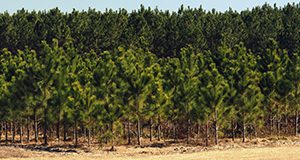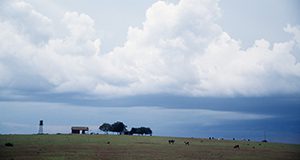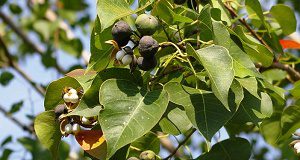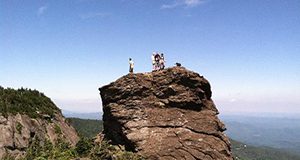Traditionally, the land expectation value (LEV) formula, the present value of perpetual cash inflows of timber revenues minus the present value of cash outflows of costs, has been employed as the main indicator of the value of a forest investment. However, when a forest stand is already established, the LEV approach is incomplete because it applies only to bare land. Thus, it is necessary to determine the value of a property with an existing forest stand. This 3-page fact sheet written by Andres Susaeta and Chris Demers and published by the UF/IFAS School of Forest Resources and Conservation provides the formula to determine the value of an already established forest stand at any stage of its development. This approach, known as the forest value formula, includes the value of the timber and the land. It can be used to compare the value of the stand when it is immediately harvested or when it is economically immature.
http://edis.ifas.ufl.edu/fr423
Tag: Chris Demers
The Optimal Forest Management of an Even-Aged Stand: The Biological Rotation versus the Land Expectation Value
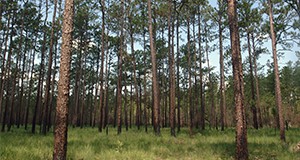
This 4-page fact sheet written by Andres Susaeta and Chris Demers and published by the UF/IFAS School of Forest Resources and Conservation provides a guide for forest landowners, managers, and stakeholders in conducting a valuation of timber investments. It reviews and provides examples of two different approaches for determining the optimal rotation age of even-aged forest stands. These methods can help forest landowners and managers in making forestry investment decisions.
http://edis.ifas.ufl.edu/fr424
Determining the Net Present Value of Timber Investments and Comparing Investments of Different Rotations
Would a forest landowner be economically better off growing a forest for pulpwood production with a short rotation instead of growing the same forest for sawtimber production with a longer rotation? To help answer this and related questions, this 4-page fact sheet written by Andres Susaeta and Chris Demers and published by the UF/IFAS School of Forest Resources and Conservation presents two approaches to determine the profitability of a forest stand. The net present value (NPV) of a single rotation provides the criterion to choose between different forest project investments of equal lives, whereas the equivalent annuity approach (EAA) is employed when forest project investments have different time lengths.
http://edis.ifas.ufl.edu/fr421
Marking First Thinnings in Pine Plantations: Potential for Increased Economic Returns
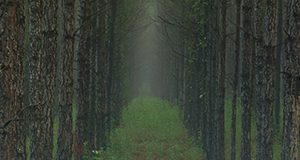
This 3-page fact sheet written by Byron Love, Michael Andreu, and Chris Demers and published by the UF/IFAS School of Forest Resources and Conservation summarizes a study to determine whether landowners may gain increased economic returns if they mark the first thinning in a southern pine stand. The study found that marking can indeed bring higher revenue at final harvest. The greater number of high-quality and faster-growing trees remaining after a marked thinning is the main reason for immediate and future increases in value.
http://edis.ifas.ufl.edu/fr410
Florida's Forest Stewardship Program: An Opportunity to Manage Your Land for Now and the Future
The Forest Stewardship Program encourages landowners to manage their lands for multiple natural resources, increases public awareness of the importance of Florida’s forestlands, and improves cooperation among natural resource agencies and organizations to meet Florida’s forest resource conservation and management needs. This three page fact sheet written by Mary Duryea, Deborah McGrath, Chris Demers, and Anthony Grossman and published by the School of Forest Resources and Conservation explains the program and its benefits and describes how to become a forest steward.
http://edis.ifas.ufl.edu/fr408
Timber Production in a Working Forest Context
Working forests are private forests managed not just for timber production but also for a host of valuable ecosystem services like providing for recreation, maintaining habitat for wildlife, and maintaining a healthy watershed. Timber production is an essential ecosystem good or service that supports a number of important industries and provides jobs in Florida. This 6-page fact sheet summarizes the results of several studies to help forest landowners and other stakeholders understand how multiple-use management affects both timber production and other ecosystem services.
http://edis.ifas.ufl.edu/fr406
Improving, Restoring, and Managing Natural Resources on Rural Properties in Florida: Sources of Financial Assistance
Interested in conserving natural resources, such as wildlife habitat, or protecting the agricultural heritage of your land? Both federal and state governments have technical and financial assistance programs to help rural landowners achieve natural resource goals. These challenges are addressed through land rentals, technical assistance, cost-shares, and incentive payments and include both time-limited and permanent land-use options.
This 8-page fact sheet written by Chris Demers, Martin B. Main and Mark E. Hostetler and published by the UF School of Forest Resources and Conservation informs landowners about government programs available to help conserve natural resources.
http://edis.ifas.ufl.edu/fr156
Controlling Invasive Exotic Plants in North Florida Forests
Of the more than 4,000 known plant species growing in Florida, approximately 30% are not native to Florida or the Southeast, and in the US invasive exotic species cost an estimated $120 billion each year in damages. Early detection and removal of invasive plants is the key to successful management. This publication describes many of the current methods used in north Florida forest operations to manage invasive exotic plants. It also provides references for additional sources of information. Written by Chris Demers, Patrick Minogue, Michael Andreu, Alan Long, and Rick Williams.
http://edis.ifas.ufl.edu/fr133
Trails, Bridges, and Boardwalks
Trails represent a landowner’s main routes for recreational activities such as walking, sightseeing, horseback riding, and bicycling. They provide access to, and through, forest land and other natural resources. They play an important role in protecting and preserving soil, water, and wild plants and animals. They can be the source of endless hours of enjoyment and relaxation. This 13-page fact sheet written by Alan Long, Anne Todd-Bockarie, Taylor Stein, Keith Bettcher, and Chris Demers and published by the School of Forest Resources and Conservation will help you plan your trails wisely and construct them carefully so that you and your guests can enjoy them to the fullest.
http://edis.ifas.ufl.edu/fr401
Forest Resource Information on the Internet: Connecting to Today’s On-line Resources
 In 1997, the UF/IFAS School of Forest Resources and Conservation (SFRC) published Forest Resource Information on the Internet, which provided detailed information about the Internet: its history, structure, and how to use it. It also provided a sample of forest resource websites. Much has changed since the first publication. This is the third revision of this document, providing updated information on the latest landowner assistance websites available. These state, regional, and national resources can serve as a springboard to a wide variety of natural resource information and programs. This 4-page fact sheet was written by Chris Demers, and published by the UF Department of School of Forest Resources and Conservation, May 2014.
In 1997, the UF/IFAS School of Forest Resources and Conservation (SFRC) published Forest Resource Information on the Internet, which provided detailed information about the Internet: its history, structure, and how to use it. It also provided a sample of forest resource websites. Much has changed since the first publication. This is the third revision of this document, providing updated information on the latest landowner assistance websites available. These state, regional, and national resources can serve as a springboard to a wide variety of natural resource information and programs. This 4-page fact sheet was written by Chris Demers, and published by the UF Department of School of Forest Resources and Conservation, May 2014.
http://edis.ifas.ufl.edu/fr182
Conservation Easements: Options for Preserving Current Land Uses
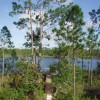 Conservation easements are cost-effective means for government agencies or non-government conservation organizations to protect land. Instead of purchasing land outright, these agreements allow organizations to purchase the development rights of a property. This protects the land and saving money. Landowners who choose this option prevent future residential and commercial development of their land, and reduce the amount of inheritance tax liability. Landowners are encouraged to enter such agreements carefully because they require several rights to be conveyed to the easement grantee and the duration of these agreements is typically perpetual. This 5-page fact sheet describes conservation easements, what is involved in establishing one, tax implications, participating government and non-government organizations, and important considerations for landowners. Written by Chris Demers and Douglas R. Carter, and published by the UF Department of School of Forest Resources and Conservation, March 2014.
Conservation easements are cost-effective means for government agencies or non-government conservation organizations to protect land. Instead of purchasing land outright, these agreements allow organizations to purchase the development rights of a property. This protects the land and saving money. Landowners who choose this option prevent future residential and commercial development of their land, and reduce the amount of inheritance tax liability. Landowners are encouraged to enter such agreements carefully because they require several rights to be conveyed to the easement grantee and the duration of these agreements is typically perpetual. This 5-page fact sheet describes conservation easements, what is involved in establishing one, tax implications, participating government and non-government organizations, and important considerations for landowners. Written by Chris Demers and Douglas R. Carter, and published by the UF Department of School of Forest Resources and Conservation, March 2014.
http://edis.ifas.ufl.edu/fr149
The Green Value of Your Woods: A Summary of Ecosystem Services Provided by Forest Stewardship Lands in Florida
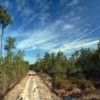 Lands enrolled in voluntary forest management and conservation programs, like the Forest Stewardship Program, promote good land management practices. In addition to benefiting the landowners enrolled in these programs, good land management provides ecosystem services to society. The Stewardship Ecosystem Services Survey calculated the physical and economic benefits of water resource protection, carbon sequestration and storage, timber production, and wildlife conservation. This 2-page fact sheet was written by Rose Godfrey, Chris Demers, Francisco Escobedo, Damian Adams, and Michael Andreu, and published by the UF Department of School of Forest Resources and Conservation, September 2013.
Lands enrolled in voluntary forest management and conservation programs, like the Forest Stewardship Program, promote good land management practices. In addition to benefiting the landowners enrolled in these programs, good land management provides ecosystem services to society. The Stewardship Ecosystem Services Survey calculated the physical and economic benefits of water resource protection, carbon sequestration and storage, timber production, and wildlife conservation. This 2-page fact sheet was written by Rose Godfrey, Chris Demers, Francisco Escobedo, Damian Adams, and Michael Andreu, and published by the UF Department of School of Forest Resources and Conservation, September 2013.
http://edis.ifas.ufl.edu/fr381
Thinning Southern Pines – A Key to Greater Returns
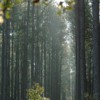 Thinning is an important silvicultural practice that redistributes the growth potential of the site to the best trees. Diameter growth rates are maintained or increased on residual trees after thinning, which increases the return on investment from higher-value trees. Biologically, thinning accelerates stand development by favoring the tallest, best-formed trees over those that are diseased, overtopped, crooked, forked, or otherwise undesirable and likely to die on their own if left in the stand long enough. In addition, thinning provides periodic income, improves access for equipment, recreation and hunting, and creates a generally healthier stand. Thinning is also beneficial for wildlife, especially when combined with prescribed fire or herbicide use to control competing vegetation. By allowing more light to reach the forest floor, thinning promotes growth of plants important as food and/or cover for wildlife species. Landowners are encouraged to consult with or hire a professional forester to assist with thinning and other forest management activities. This 6-page fact sheet was written by Chris Demers, Michael Andreu, Babe McGowan, Alan Long, and Jarek Nowak, and published by the UF Department of School of Forest Resources and Conservation, June 2013.
Thinning is an important silvicultural practice that redistributes the growth potential of the site to the best trees. Diameter growth rates are maintained or increased on residual trees after thinning, which increases the return on investment from higher-value trees. Biologically, thinning accelerates stand development by favoring the tallest, best-formed trees over those that are diseased, overtopped, crooked, forked, or otherwise undesirable and likely to die on their own if left in the stand long enough. In addition, thinning provides periodic income, improves access for equipment, recreation and hunting, and creates a generally healthier stand. Thinning is also beneficial for wildlife, especially when combined with prescribed fire or herbicide use to control competing vegetation. By allowing more light to reach the forest floor, thinning promotes growth of plants important as food and/or cover for wildlife species. Landowners are encouraged to consult with or hire a professional forester to assist with thinning and other forest management activities. This 6-page fact sheet was written by Chris Demers, Michael Andreu, Babe McGowan, Alan Long, and Jarek Nowak, and published by the UF Department of School of Forest Resources and Conservation, June 2013.
http://edis.ifas.ufl.edu/fr159
Introduction to Geographic Information Systems (FOR288/FR356)
 A GIS can be used in land management to document existing conditions, plan future operations, and archive completed work. Farming applications include soil productivity for different crops, crop yield prediction, and determining fertilizer and pesticide application rates. Forestry applications include estimating forest stand acreage, determining forest stand characteristics, and determining where to harvest. This 4-page fact sheet was written by John Lagrosa, Chris Demers, and Michael Andreu, and published by the UF Department of School of Forest Resources and Conservation, March 2012.
A GIS can be used in land management to document existing conditions, plan future operations, and archive completed work. Farming applications include soil productivity for different crops, crop yield prediction, and determining fertilizer and pesticide application rates. Forestry applications include estimating forest stand acreage, determining forest stand characteristics, and determining where to harvest. This 4-page fact sheet was written by John Lagrosa, Chris Demers, and Michael Andreu, and published by the UF Department of School of Forest Resources and Conservation, March 2012.
http://edis.ifas.ufl.edu/fr356
Controlling Invasive Exotic Plants in North Florida Forests (SSFOR19/FR133)
 Invasive non-native organisms are one of the greatest threats to the natural ecosystems of the United States. Invasive plants reduce biodiversity, encroach on endangered and threatened species, and rob native species of habitat. This 8-page fact sheet describes many of the current methods used to manage some of the more common and troublesome invasive exotic plants in north Florida forests. Written by Chris Demers, Alan Long and Rick Williams, and published by the UF Department of School of Forest Resources and Conservation, January 2012.
Invasive non-native organisms are one of the greatest threats to the natural ecosystems of the United States. Invasive plants reduce biodiversity, encroach on endangered and threatened species, and rob native species of habitat. This 8-page fact sheet describes many of the current methods used to manage some of the more common and troublesome invasive exotic plants in north Florida forests. Written by Chris Demers, Alan Long and Rick Williams, and published by the UF Department of School of Forest Resources and Conservation, January 2012.
http://edis.ifas.ufl.edu/fr133
Establishing and Maintaining Wildlife Food Sources (SSFOR12/FR062)
 Provide abundant and varied food sources for wildlife on your forested land, with this 5-page fact sheet written by Chris Demers, Alan Long, Chris Latt, and Emma Willcox, and published by the UF Department of School of Forest Resources and Conservation, May 2011.
Provide abundant and varied food sources for wildlife on your forested land, with this 5-page fact sheet written by Chris Demers, Alan Long, Chris Latt, and Emma Willcox, and published by the UF Department of School of Forest Resources and Conservation, May 2011.
http://edis.ifas.ufl.edu/fr062
Forest Resource Information on the Internet: Connecting to Today’s On-line Resources (FOR124/FR182)
 The original 1997 version of this fact sheet provided detailed information about the Internet: its history, structure, and how to use it. It also provided a sample of forest resource websites. This is a third version of this fact sheet, providing updated information on the latest landowner assistance websites available. These state, regional, and national resources can serve as a springboard to a wide variety of natural resource information and programs. Written by Chris Demers and published by the UF Department of School of Forest Resources and Conservation, May 2011.
The original 1997 version of this fact sheet provided detailed information about the Internet: its history, structure, and how to use it. It also provided a sample of forest resource websites. This is a third version of this fact sheet, providing updated information on the latest landowner assistance websites available. These state, regional, and national resources can serve as a springboard to a wide variety of natural resource information and programs. Written by Chris Demers and published by the UF Department of School of Forest Resources and Conservation, May 2011.
http://edis.ifas.ufl.edu/fr182
Pre-Commercial Thinning Loblolly Pines: Does It Pay? (FOR188/FR243)

The decision to pre-commercially thin a stand is often difficult for many landowners because of the costs involved with implementing this treatment. It is costly but, when applied properly, it is a financially attractive investment. It is performed before trees reach merchantable size, to reduce densities in overstocked stands and improve the growth of the remaining trees. This 6-page fact sheet was written by R. Williams, K. Bohn, J. McKeithen and C. Demers, and published by the UF Department of School of Forest Resources and Conservation, May 2011.
http://edis.ifas.ufl.edu/fr243
Conservation Easements: Options for Preserving Current Land Uses (SSFOR21/FR149)
Many landowners have a strong connection to their land and want to ensure its protection for many generations. Conservation easements can prevent future residential and commercial development of one’s land, and reduce inheritance tax liability for one’s heirs. This 6-page fact sheet will describe conservation easements, what is involved in establishing one, some of the tax implications of such agreements, the government and non-government organizations that commonly participate in conservation easements, and important considerations for landowners before entering into such an agreement. Written by Chris Demers and Douglas R. Carter, and published by the UF School of Forest Resources and Conservation, March 2011.
http://edis.ifas.ufl.edu/fr149
SSFOR13/FR064 Longleaf Pine Regeneration
SSFOR13, a 8-page fact sheet by Chris Demers, Alan Long and Patrick Minogue, provides landowners with long-term, multiple-use resource management objectives with strategies for artificial and natural regeneration of this insect-, disease- and fire-resistant species. Includes references. Published by the UF Department of School of Forest Resources and Conservation, November 2010.
http://edis.ifas.ufl.edu/fr064
